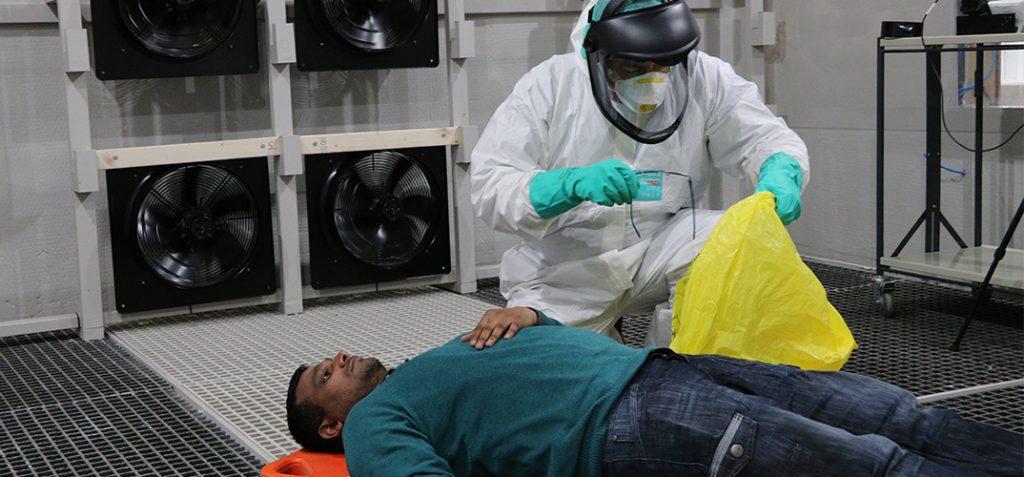The Toxicology Research Group at the University of Hertfordshire has been testing the effectiveness of different personal protective equipment (PPE) for reducing potential exposure to COVID-19.
PPE is vital in protecting healthcare workers on the frontline against the coronavirus. Traditional methods that measure the effectiveness of PPE don’t normally consider how a person wears the equipment or what happens to it when they perform common activities such as bending, pushing trolleys or lifting patients.
In short:
- Using a large, state-of-the-art chamber, researchers can simulate exposure to the COVID-19 by dispersing an aerosol of common salt nanoparticles under a variety of environmental conditions.
- The team uses specialist dosimeters and the ELPI+ fine particle analyser to quickly and accurately measure the performance of PPE. They are working in partnership with industry-leading experts from Scielutions Limited and Dekati Ltd to further refine the test method.
- This research will provide policymakers and healthcare professionals with new, evidence-based guidance to identify which PPE items work best under different conditions and ways in which the levels of protection can be further improved.
Professor Robert Chilcott, Director of the Toxicology Research Group at the University of Hertfordshire, said:
“It is critically important that healthcare professionals are using the best protection available to them and have confidence that their PPE will remain effective against the virus, no matter what they’re doing and where they’re working. We’re pleased to be making this significant contribution to the COVID-19 response.”
For more information, visit the University of Hertfordshire website.




